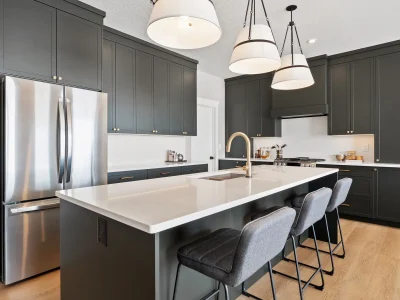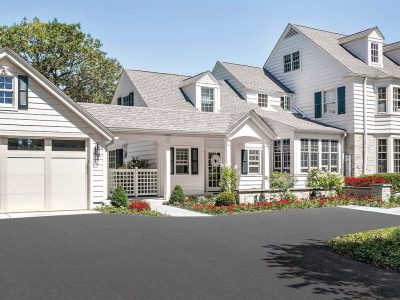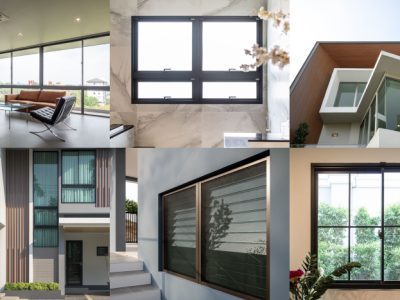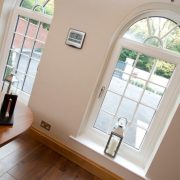Planning a window upgrade this year requires more than a quick glance at showroom tags—you need a clear map of what drives price and where the best value hides. Tilt-and-turn designs blend security, ventilation, and sleek sightlines, but their engineering and hardware make cost comparisons unique. This guide unpacks 2025 price influences, from materials and glazing to labor and long-term performance. If you’re sorting through quotes or building a budget, Start Here to learn how each choice shifts your total. Along the way, you’ll see how energy-focused upgrades can reduce lifetime expenses and why higher-quality frames often return their premium. By the end, you’ll have a workable framework for realistic estimates and smarter trade-offs.
Breaking Down Material and Manufacturing Costs in 2025
In 2025, baseline factory pricing for tilt-and-turn windows is shaped by three primary inputs: frame materials, precision hardware, and glazing. Material costs have stabilized after earlier supply chain swings, but modest increases of roughly 2–5% year-over-year persist due to energy and logistics. uPVC typically anchors the budget tier, aluminum occupies the performance/design tier, and engineered wood or hardwoods sit at the premium end. Across most brands, materials and manufacturing represent about 45–60% of a window’s price before installation, with hardware quality (hinges, multipoint locks, tilt mechanisms) being a major swing factor. If you’re seeing a wide gap between quotes, it often reflects different manufacturing tolerances, reinforcement methods, and the brand’s service standards—key inputs to real-world durability and overall Tilt And Turn Windows Cost.
What’s driving factory prices this year
Expect uPVC to remain the most cost-efficient for standard sizes, with mid-market units often landing around the $450–$900 range before install, depending on glazing and reinforcement. Aluminum’s price reflects both the metal and its thermal break technology; higher-spec frames with advanced breaks and powder-coat finishes typically fall around $700–$1,400 before labor. Wood shows the widest spread, from engineered softwoods at the low end to premium hardwoods at the high end, often ranging from $800–$1,600 pre-install depending on species, factory finishing, and cladding. Manufacturing automation matters as well: robotic fabrication and tighter QA can reduce defects and callbacks, indirectly lowering lifetime ownership costs. In short, the upfront delta between materials isn’t only about looks; it’s a proxy for structural stiffness, thermal performance, and the consistency you can expect from the hinge-and-lock system over decades.
How Glazing Type and Frame Size Affect Total Pricing
Glazing is the second major pricing lever, and its choices stack quickly. A standard double-pane, low‑E, argon-filled unit forms the baseline for most homes; upgrading to triple glazing adds extra panes, spacer complexity, and weight-rated hardware. On average, triple glazing adds roughly $150–$350 per window over a comparable double-pane assembly, with laminated glass costing more due to its safety interlayer. Warm-edge spacers, higher-grade low‑E coatings tuned for your climate, and krypton gas in smaller cavities can each contribute incremental cost. Because tilt-and-turn sashes need to handle both tilt ventilation and full inward swing, larger or heavier glazing packages also trigger reinforcement costs, which ripple through hardware and frame selections—another reason this category shapes overall Tilt And Turn Windows Cost.
Size increases aren’t linear—here’s why it matters
As frame size grows, price doesn’t scale in a straight line. Larger windows intensify the structural demands on frames and hinges, often requiring steel or aluminum reinforcement in uPVC profiles or thicker-walled aluminum sections. Oversized panels may need thicker glass or tempered/laminated configurations, adding weight and glass shop surcharges. Installers also price larger units higher due to handling complexity and the need for additional personnel or equipment. In practice, moving from a common 24×36 inch unit to a 36×60 inch unit can raise costs by 40–80%, with even higher jumps when you cross into sizes that require custom glass or heavy-duty hardware families.
Regional Labor Rates and Installation Complexity Explained
Labor rates vary widely by region, and those differences can alter your final invoice as much as material choices. Metropolitan areas with higher wages or union labor typically bill more per opening than rural or mixed markets. In 2025, standard retrofit installation for a tilt-and-turn often ranges from $250–$600 per window, not including disposal or repairs; complex installs can climb to $800–$1,200 when structural work, masonry cutting, or scaffolding are involved. Code compliance adds variance too—coastal wind zones, high altitude sites, or multifamily buildings with stringent ingress/egress rules may require added hardware, specialty anchors, or inspections. When comparing quotes, ask for a line-by-line breakdown of labor, materials, disposal, and finishing so you understand where the spend is concentrated.
Complexity raises time-on-site and overhead
Beyond base rates, jobsite logistics can nudge labor up or down. Upper-story access, narrow staircases, or tight urban curb space can lengthen installation time and elevate risk, which installers price accordingly. Replacement scenarios often reveal surprises—hidden rot, out-of-square openings, or stucco/masonry interfaces that demand new flashing and waterproofing details. Weather exposure compounds complexity: installers may charge for temporary protection if rain or wind threatens work quality. Permitting and inspection schedules can add soft costs and delays, especially in municipalities with strict energy or historic district requirements. These variables don’t just affect schedule—they increase the total project cost even when your window unit price stays the same.
Comparing uPVC, Aluminum, and Wood Frame Budgets
When you weigh materials side-by-side, think in terms of total installed price and life-cycle value. For 2025, many homeowners see uPVC tilt-and-turn windows fully installed around $650–$1,200 per unit for standard sizes and typical glazing. Aluminum, prized for slim sightlines and structural rigidity, often falls in the $900–$1,800 installed range depending on thermal break quality and finish. Wood frames—beloved for warmth and architectural authenticity—generally run $1,000–$2,200 installed, with factory finishes and exterior cladding pushing toward the upper end. High-design, oversized, or bespoke configurations in any material can exceed these ranges quickly, particularly when premium triple glazing or acoustic laminates are included.
Choosing the right material for your priorities
Pick uPVC when budget control and low maintenance top your list; modern profiles with steel reinforcement handle most residential sizes well and deliver strong thermal performance. Choose aluminum if you need larger openings, want slimmer profiles, or live in a harsher climate where dimensional stability and durability shine—just make sure the thermal break is robust and the U‑values meet your target. Opt for wood when design integrity or historic authenticity matters, and consider aluminum-clad exteriors to reduce upkeep without sacrificing character. For mixed goals, hybrid systems (like wood interior with aluminum exterior) often strike a balance, albeit at a premium. If you’re unsure where to begin, Start Here with a material-neutral quote request that specifies performance targets, then compare how each frame type meets them at different price points.
Energy-Saving Upgrades That Justify Higher Initial Costs
Energy-focused upgrades add cost but frequently shorten payback time while boosting comfort. Low‑E coatings tailored to your climate can reduce solar heat gain or maximize winter heat retention, and argon-filled double panes are now table stakes for efficiency. Triple glazing enhances acoustic comfort and thermal resistance, which is especially valuable in cold climates or noisy urban settings. Warm-edge spacers and insulated frame chambers reduce condensation risk and tighten thermal performance at the perimeter—an area where many windows leak energy. While these add-ons can feel incremental, they compound to reduce heating and cooling loads, lengthen HVAC equipment life, and stabilize indoor temperatures.
What you’ll typically pay—and save
Expect to pay about $40–$120 extra per window for advanced low‑E or warm-edge spacer upgrades and $150–$350 more for triple glazing, depending on size and brand. In mixed climates replacing older single-pane or leaky double-pane units, whole-home savings often land around $150–$450 per year for a 10–14 window project, with colder regions seeing higher returns. Utility rebates and seasonal manufacturer promotions can offset 5–20% of upgrade costs, and in some regions, tax incentives apply to qualifying efficient products. Keep in mind, reduced maintenance (particularly with uPVC and aluminum) and fewer drafts are tangible lifestyle benefits that don’t fully show up in a simple payback calculation. Taken together, these efficiency enhancements can justify the premium by raising year-round comfort, protecting interior finishes, and stabilizing bills when energy prices rise.
Calculating Long-Term ROI for Tilt and Turn Window Investments
A realistic ROI looks at more than sticker price; it blends energy savings, maintenance, durability, and resale. Start with your total installed cost—say you replace 12 windows at an average of $1,150 each for a $13,800 project. Next, model savings: if energy bills drop by $250–$450 per year and maintenance declines by $50–$100 annually versus older units, your direct cash-flow benefit might be $300–$550 per year. That suggests a simple payback of roughly 25–46 years, which may sound long, but it ignores comfort, noise reduction, condensation control, and aesthetic value—benefits that influence resale. Many markets show a 55–70% recoup at sale for well-executed window replacements, which can significantly offset the upfront outlay if you plan to move within a decade.
A quick framework to run your numbers
Begin with performance goals and budget guardrails—if you’re replacing failing single-pane units, your energy delta will be larger than if you’re swapping mid‑2000s double panes. Request itemized quotes that separate frame material, glazing, hardware, installation, and finishing so you can compare apples to apples. Apply conservative savings assumptions for your climate, and factor in any rebates or credits in your first-year cost basis. Then weigh qualitative returns that don’t fit neatly in spreadsheets: quieter interiors, consistent temperatures, easier cleaning, and a more secure tilt-and-turn locking system. If you’re collecting bids, Start Here by standardizing specs—size, glazing package, U‑value goal, hardware tier—so every quote reflects the same performance target and gives you a true read on value.













Comments